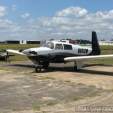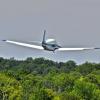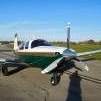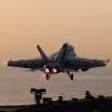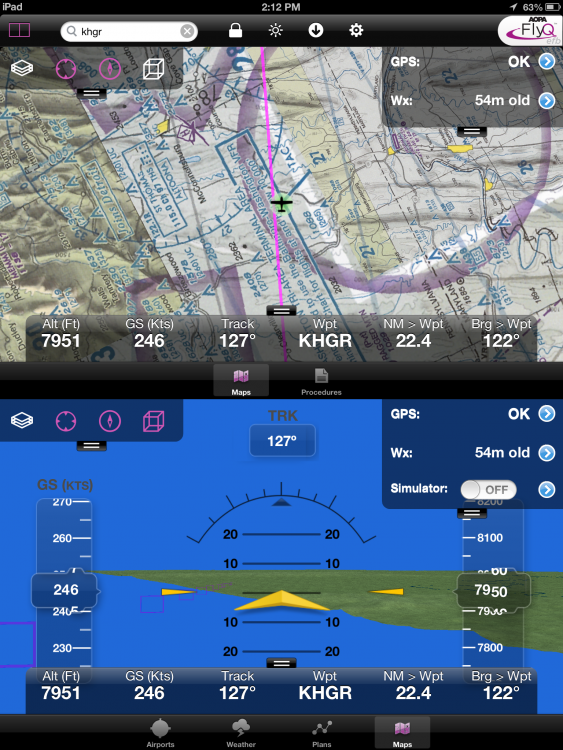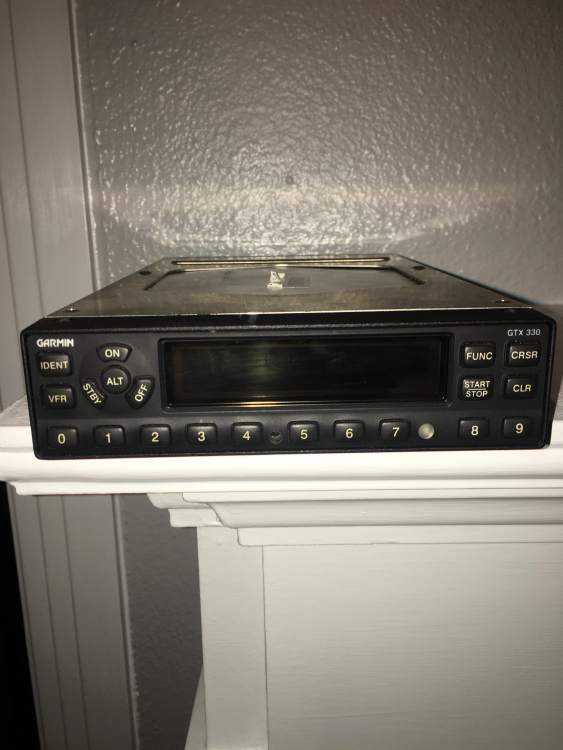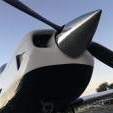Leaderboard
Popular Content
Showing content with the highest reputation on 05/16/2019 in Posts
-
True. But that requires building a relationship with the shop before handing over the plane. I took my 252 to three different avionics shops before settling on one. I also got opinions from my AI with whom I have a great relationship built over years and trust explicitly. It was pretty obvious that the shop I settled on thought the same way I did about the work that needed to be done. Obviously shit happens. But my Mooney doesn't go into any shop without a very clear understanding of the expectations, business practices, and agreements in writing about how it will all go down. I did have one situation where my plane was in the shop and the owner and I came to a disagreement over the way forward. I showed up at the shop, paid the bill to that point, and took possession of the plane. I reinstalled pieces that were disassembled, and flew the plane out. The shop owner told me the plane was not airworthy and couldn't be moved. I said I wasn't asking for his opinion and flew the plane away to another shop. That was a couple of years ago. It was a good lesson to learn. Keep control of the situation. Check in often. Show up and inspect the progress. And at the end of the day, I'm PIC and I'm the owner. I determine if I can fly the plane or not.6 points
-
OMG! I feel for you. But let me second what @LANCECASPER said. No one should ever go into any shop for an upgrade without knowing as much or more than the shop knows. In this day and age with everything available on the Internet, there is no reason not to know. And when spending $20 to $100 AMU's, it's worth the time to educate ones self. Back in 2014 I knew nothing about Mooneys much less what went in a Mooney panel. Today, I know as much or more about the options for Mooney panels than any avionics shop in the country. And everyone can have the same information for free. When I take my Mooney in for avionics upgrades, I call the shots and say what will be done. And when an avionics shop disagrees with me, I find another shop. After all, I know better than they do. It's the only way to operate in this business.6 points
-
G1000 ovations with STEC autopilots can be "reverse engineered" and have a GX3 with a G500 AP put in! The Ovations were "optional" to have the G1000. I imagine the same is true on the STEC Bravo's. Got your ears on @Deb5 points
-
It seems like a simple issue to just remove one of the G5s, reinstall the KI256 and realign the KC192 to get your KFC 150 back up and running. Then at a latter date have somone else install the GFC 500 that does work with the G5. With the G5 already installed, after you sell the KC 192 and its 3 servos, the cost should run around 15K net for the 4 servo model. Dealing with attorneys is a downer and just prolongs the pain of the mistake.5 points
-
This is what I meant. I'm paying an avionics shop to know how to run wires, solder joints and know what connectors to use, and to sign my log book. But I chose the components and their arrangement in the panel. @steingar is correct that there is a lot to know about a lot of boxes. But I'm just not confident there is any avionics shop out there that knows all that data either. They're too busy running wires and doing installs to read all the marketing material, user guides, etc. And the manufacturer reps are obviously biased. In fact I've found avionics shops to be biased towards what is easiest to install and what has the best margin for them. But since I'm the guy who's gonna spend all the hours with my nose just inches from this panel, I want it to be right and no one has more of a vested interest in that than me.5 points
-
I'm attaching what a really good bid looks like. As you can see, the parts cost should be about the same for all bids. The bid differences I found were in the labor costs. Estimate_1343_from_EE_Aviation_dba_Chandler_Avionics.pdf3 points
-
Don’t worry about weather Don. I say that because the kids are coming in this weekend for my birthday on Sunday. That means I won’t be able to make it. THAT in turn means that since I want to be there and can’t, the weather will straighten out and be fine. Isn't that some positive attitude logic?3 points
-
Greg I looked at the pictures, all the pins look like they are seated properly, the other thing I'm looking for is any of the contacts that don't spring back. I can't see any in the pictures, take a good look as well. Stabilant 22 is great for any connector, I use it on everything I touch. Bob Weber WebairConsulting.com2 points
-
Well, I personally think it's a great idea to practice on a crosswind runway when traffic permits. You never know when you might need that skill for real! Richard Collins used to say something to the effect that personal minimums may be useful for planning purposes, but once aloft, what you see is what you get, and you might just have to shoot an approach to minimums even if that's lower than your "personal" minimum, so you better stay sharp. Short fields, soft fields, crosswinds, slow flight, steep turns -- all that stuff we were good at one upon a time gets lost if we don't practice. Skip2 points
-
As I understand it, the G-1000 was optional on the M20R certification with the STEC installed, so it can be done. Is the exclusion on the Garmin certification only if the G-1000 is presently installed? Because you could take it out that "option" then there wouldn't be a G-1000 to worry about. You aren't adding a G3X or GFC500 to a G-1000...You are adding it to an M20R.2 points
-
I just went on to the STEC website and the 3100 is not certified for Mooney aircraft yet according to their website. It is apparently in the works but not yet certified. However, according to the website the cost to change from an STEC 30 to a 3100 will probably be far less than changing out to a GFC500.2 points
-
you do not have to know the ins and outs of how to install the equipment, just the knowledge of what works with what and what you want it to do. by talking to several shops and here on Mooneyspace you can set your expectations before dropping off the plane.2 points
-
Chris, this has been a long and interesting thread. From your description in your posts, here's what likely happened: Your airspeed was too high on short final and, perhaps due to the obstructions, you were maybe a bit high also. At some point, as you started using up runway, you forced the plane down to the ground before it was ready. That's the only way to get it to land on the nose wheel, and that's why it bounced. It's also very common, so don't feel bad. This didn't happen with your instructor because an instructor would have seen this coming and had you correct or go around. You only need to satisfy two conditions for a good landing: 1) The airplane needs to be aligned with the centerline, flying level and decelerating a few inches above the runway, and 2) the airplane needs to be in a nose high attitude. If you do that, it will land itself. There are numerous techniques to get the airplane to a point that satisfies those two conditions, and pilots will argue endlessly about which technique is best. Fly safe, Skip2 points
-
I don't think I'd allow a shop to touch my airplane if they installed a G5, and didn't even realize that the autopilot wasn't working. they should know that the G5 AI and KFC isn't compatible, but the fact that they were able to deliver the aircraft without knowing that the AP wasnt working would make me somewhat reluctant to have them as my avionics shop.2 points
-
Oh my goodness, any shop that didn't realize that the G5 isn't going to replace the KI-256 on a King Autopilot shouldn't be allowed to touch your airplane ever again. How exactly did they wire it thinking it would work? Nowhere in the install manual could they possibly find an application for the G5 to replace an attitude indicator in a King Autopilot. Are they a Garmin dealer? I'm guessing no. This is not something you want to hear, but you have to know exactly what you want before you ever let a shop start. You have to educate yourself on what is and what is not compatible with what you have in the airplane. I know . . that's supposed to be their job, but this would never have gotten to this point if you would have gone in their forearmed. That's what Mooneyspace is great for - post your thoughts and you will get responses. We all keep each other in check. Hopefully they didn't remove your vacuum system and backup. Please post the name of the shop so none of us go there. Regarding the bill - my thinking is that you owe them for the G5 HSI and labor. You don't say what your ADSB solution was, but you owe for parts and labor there. The only thing you don't owe for would be the time installing and removing the G5 Attitude Indicator and the G5 Attitude Indicator itself. However it sounds like you might have supplied your own G5's. Yes, the bill will be much more than it should have been and yes, you lost the use of your airplane for months - all of this is considered tuition for the education you received.2 points
-
OK, I’ll bite: why would rudder authority make for better landings? The only thing you need the rudder for is to keep it straight. Which reminds me: one of the not so great aspects of the Mooney design is that the nose wheel doesn’t disconnect from the rudder when fully extended as in many airplanes. And, since the steering is rigid (no bungees) you have to relax rudder pressure when the nose wheel comes down during a crosswind landing or you head for the grass. Bet that’s why the nose wheel deflection - and hence the turning radius - is limited. And, since the nose wheel pivots less than other airplanes, it’s more easily damaged by towing. Skip2 points
-
I didn’t have to show proof of purchase, but I believe I know why. I made the reservation and got the code. The avionics shop then did the installation and registered it with the the FAA. I believe that served as my proof of purchase.2 points
-
2 points
-
2 points
-
2 points
-
Probably the arm being further aft from the vertical axis confers additional yaw force and authority Sounds like the OP hasn’t mastered short / obstructed approaches. Not like that would be anything I’d be ready for home field or not with that level of experience in a new to me Mooney. Especially at a <3000 ft field. Would go out with an instructor and practice chopping power once clear of the obstacle , carrying about 5 MPH additional airspeed above your *calculated* weight-based approach speed and aim for prior to the line if your displaced threshold is unusable for landing. You should be able to touch down consistently just past the start of the runway bar. Personally if I couldn’t master that task over and over, I wouldn’t consider myself proficient for landing or departing on a runway of that length with obstructions. Close in obstructions are serious business especially when you start getting to the corners of the performance or aerodynamic envelope (search this site for Patrick or W78 crashes and you’ll get a sense of how wrong things can go so quickly at short or close in fields). My suggestion would be to do as your doing - work with the instructor. But you’re going to have to master landings on a less demanding runway before considering home base your home base. I say this from experience- I bald spotted a tire at N07 2700 ft in my first week of Mooney ownership. That airport has close in obstructions. I decided last week when up in that neighborhood - operating at max gross on a hot day with my family on board - that I wasn’t up to that task. Especially with regard to a planned departure after dark. I’m not current / proficient / recently familiar enough with that field to make it past my risk assessment. I have about 750 landings in my J - not inexperienced by any means but not to a point where I’d consider myself a master of all performance demands unless throughly practiced and proficient. I’ve also considered that flying with small children is some of the most demanding flying I’ve done. It’s riddled with potential for distraction or worse. If you can manage a four year old who wakes up in your copilot seat with a night terror on your base to final turn, or decides when she’s in the back seat she’s going to kick your seat like a brat when you’re flying an ILS... you can probably handle a G-V full of drunk and out of control Rock stars. At least a few of the Mooneyspacers have met my oldest daughter Olivia - who does long cross countries, ILSs, and flies formation with me. She’s an amazing kid but not always perfect so a plan A, B, and C is in order for every flight. Make sure you can bring your A-game and a half and have a child mitigation plan before doing anything but the lowest risk flying. But learn the how to bring the A game without the baby on board.2 points
-
Joe Cole is much of the reason I bought the Mooney I did. He is one heck of a stand up individual. Gave me a whole bunch of his time explaining things on the phone. I ever get back that way I just hope I have the chance to buy him a beer.2 points
-
One other thing to consider. I'm not sure which, but I was under the impression that some digital fuel gauges only have you set 4 or 5 fuel points during calibration. Is that the case for the EDM900? For my AeroSpace Logic FL202, calibration occurs in 2 gallon increments which is 17 data points for each wing of my M20J. Fuel level (float level) may not be linearly related to fuel on board. That is, a one inch drop in float level might correspond to 7 gallons when the tank is full but 5 gallons when nearly empty. If the gauge assumes a linear relationship between calibration points, that could result in some inaccuracy. How much I don't know. The more data points used during calibration, the less significant the error will be. Just thinking out loud (or more accurately with my fingers).2 points
-
Ok, I'll share my 'they all fly the same way' history. I've got at least 300 hours in each of these aircraft: M20J, T37, T38, F106, F15, DC9, 757 and 767. I landed them all the same way. Fly final on speed, gradual flare, hold it off until I reach the proper landing attitude. The only difference was what speed to fly on final (62 - 202 KIAS), when to start the flare, and when to pull the power (between 50' in the air and descent rate stopped). Although, to be honest, on the DC9-30 and larger, I got smoother landings if I was just inches above the ground and started to lower the nose just as the mains were touching down. They all land just fine when they are ready.2 points
-
If you spend 20-30 minutes on the phone with this guy he will walk you through your KFC150 problems without throwing parts at it. He is the King AP whisperer. Bob WeberWebAir Consulting616 822 19992 points
-
Was climbing out yesterday and lost manifold pressure in the climb and amended altitude to 160. It wasn't a sudden or catastrophic loss, I just couldn't maintain 35" so I cruised at 2300/29". If I pushed the throttle forward I could get 33", but I wanted to leave some headroom as I believed I was dealing with an intake leak and was concerned my turbo might be running at excessively high RPM. At 10,000ft, I was able to get a full 38" of MP. Previously, I might start seeing a drop from 38" to around 37" at over 20,000 and could get close at 24,000ft. I could maintain a 35/25 climb to 240, but fuel pressure would drop off and I'd have to use the low boost for assist. I haven't tried going that high since getting my engine monitor installed.1 point
-
2019 MooneyMAX Conference Maintenance and Education June 6-9, 2019 $295.00 per person for complete package* *Early registration $250.00 thru April 30th Registration package includes: All seminars and presentations Maintenance Clinic Right Seat Ready© - non-pilot companion Safety Seminar Mooney Zoom Speed Trials Saturday afternoon Homemade Ice Cream Feast on site Mooney Mixer Cocktail Party Lunches: Thursday, Friday and Saturday Saturday Evening Banquet East Texas Regional Airport (KGGG) and Hilton Garden Inn and Event Center 905 East Hawkins Parkway - Longview, TX 75605 Events: · MooneyMAX Maintenance Seminar (Friday & Saturday) - Don and Paul Maxwell and our staff · Right Seat Ready© (Friday & Saturday) - Jan Maxwell and Jolie Lucas · 2 days of seminars with top aviation professionals at the Hilton Garden Inn with lunch provided · Mooney Zoom Speed Trial Competition - categories for all models · Saturday - Continuation of Maintenance and hands on instruction · Saturday - Continuation of Right Seat Ready© with tour of Control Tower and flight simulators · Saturday - Airport Day - Lunch and Special Homemade Ice Cream Feast · Mooney Zoom Speed Trials with lunch and special afternoon ice cream treat · Transportation provided and rental cars available · Saturday evening Gala Banquet at Hilton Garden Inn Hotel Reservations: · Room rates: $119.00 (includes two cooked to order breakfast for two) · As a result of the MooneyMAX Round-up Conference and Workshops last October, we are happy to announce the 2019 MooneyMAX Conference and Workshops scheduled for June 6-9, 2019. This event is an educational event for the enthusiastic Mooney community and dedicated to enhancing safety, flight precision, quality maintenance and love of flying. The newly built Hilton Garden Hotel and Conference Center will be the host of the 2019 MooneyMAX Conference and Workshop with over 8,000 sq. ft. of flexible meeting and pre-function space. Exhibitors will be in the large 1,500 sq. ft. pre-function area, immediately outside all meeting rooms, and will be open from 8:00 a.m. to 5:00 p.m. Thursday and Friday, June 6th and 7th (Wednesday afternoon will be open to set-up for all exhibitors.) If you have questions or comments, please call 903-643-9902 or e-mail Jan Maxwell, jmaxwell@donmaxwell.com, or Patty Hasbell, phasbell@donmaxwell.com HOST HOTEL Hilton Garden Inn and Event Center 905 East Hawkins Parkway - Longview, TX 75605 Room Rate: $119.00 (includes cooked to order breakfast for two guests each day) For Online Reservations: Hilton Garden Inn - Online Reservations Group Name: MOONEY MAX CONFERENCE - JUNE 2019 For additional information related to the Hilton Garden Inn in Longview, TX 903-212-3000 Line-up of special presenters: Mike Busch Specialties: High-profile aviation writer, speaker and teacher since 1970. Operation and maintenance of piston-powered general aviation airplanes. Well-known in aviation circles as founder of AVweb, and as a respected aviation writer and teacher for nearly 40 years. For the past 20 years, the primary focus of his writing and teaching has been aircraft maintenance. BA in mathematics from Dartmouth College, Magna Cum Laude, Phi Beta Kappa. At Dartmouth, did pioneering work in computer software development. Graduate studies in mathematics at Princeton, and graduate studies in business administration at Columbia. After retiring from a long and successful career as a software entrepreneur, co-founded AVweb (pioneering Internet aviation magazine and news service with 130,000 subscribers) in 1995. Served as its editor-in-chief and one of its most prolific writers for seven years until AVweb acquired by Belvoir Publications in 2002. Since 1970, published hundreds of articles in Air Facts, American Bonanza Society Magazine, AVweb, Cessna Pilots Association Magazine, Cirrus Pilot, EAA Sport Aviation, IFR, Light Plane Maintenance, and The Aviation Consumer. Co-founder of Aeromedix.com LLC, responsible almost single-handedly for the introduction of pulse oximeters and digital carbon monoxide detectors into GA cockpits. Since 2004 has taught 1000+ aircraft owners how to manage maintenance of their airplanes. More than 45 years in virtually all aspects of aircraft piston engine design, development, certification, installation and flight-testing. Bob Minnis A pilot since 1964, 7,500+ hours as PIC in piston GA airplanes. Commercial pilot with instrument, single- and multi-engine land, single-engine sea, and glider ratings; CFI for airplanes, instruments and multi-engine; and A&P mechanic with Inspection Authorization. FAA DERT - Engine and Powerplant Engineering – 1993 to present FAA DARF- Manufacturing – 1999 to present ODA Unit Member – 3S Engineering, Hartzell Propeller & Bombardier Minnis Aviation LLC - Owner, consulting engineering services firm providing technical, DER & DAR support. AvPower LLC - Principal Owner/Partner. Engineering services firm providing technical, DER & DAR Support and products to general aviation. PowerLite LLC - Principal Owner/Partner, Engineering Company dedicated to the development of STC’s. Aerospace Components LLC - Principal Owner/Partner, Engineering Company dedicated to the development of PMA’s. Teledyne Continental Motors - Mobile, Alabama Director of Installations, Director of engineering technical and customer support group for aircraft products. Vice President of Quality Control / Military Vice President and General Manager of Teledyne Abbeville General Manager of Teledyne Fixed Base Operation, Project Engineer, Supervisor of Mechanical Design, Associate Project Engineer, Senior Designer Lucky Louque Air Salvage of Dallas A part of General Aviation since 1967 and has been with Air Salvage of Dallas since 1974 Engine and accessory overhaul Major airframe repairs and alterations Engine test cell runs Accident Investigations and reconstruction Annual, 100 hr. and conformity inspections Credentials: Pilot single & multi engine land A&P Mechanic, IA (Inspection Authorization) DME (Designated Mechanic Examiner) DAR (Designated Airworthiness Representative) Amateur Built Original Issuance & Reassurance Airworthiness Certificates Import and Export (Complete aircraft, engine, props & components) Safety Counselor, Remedial Training Instructor IA Refresher Course Instructor FAAST Team Member Bob Kromer Forty-year career in General Aviation in Engineering Flight Test as well as serving in various management/leadership positions, including the Mooney factory. From 1983 – 1986, served as Mooney’s factory engineering test pilot performing development and certification work on M20J and M20K improvements. Served as the Flight test Pilot on the experimental, six-place, pressurized Mooney 301. From 1998-2001 served as MAPA’s Executive Director. Flown Mooneys for a total of 1500 hours – 1000 hours of factory flight testing plus 500 hours using Mooneys for personal transportation. Flown and evaluated all production Mooney models except for the single-place Mite, the M22 Mustang and the original wood-wing M20. Served as the primary Test Pilot for the complete Model M20K 252 FAA development and certification program. From 1986-1991 served as the Mooney factory Executive Vice President and General Manager, the top leadership position in Kerrville, Texas. Currently serving as Senior VP Engineering and Flight Test at Blackhawk Modifications in Waco, Texas, performing development and FAA certification flight testing on more powerful Pratt & Whitney turboprop engines installed in various models of King Airs and Cessna Caravan. Captain Mike Jesch Captain Mike Jesch has been flying for over 40 years and a Flight Instructor and airline pilot for over 30 years. Currently a senior Boeing 737 Captain for a major US airline, and owns and flies a Cessna 182 based in Southern California. Two-time Master CFI Two-time LGB District FAASTeam Rep Of the Year. Since the first airplane he ever got to maneuver as a young teenager was an M20J, he's had a special affinity for the Mooney series, and has flown many of them over the years, from the M18 Mite up to the M20R Ovation. Jimmy Garrison All American Aircraft Sales Integrity Aero All American Aircraft Sales is well known company in the Mooney world, specializing in the acquisition, sales and brokerage of all models of Mooney Aircraft since 1991. Currently, All American averages just under one Mooney sale per week. Jimmy Garrison is one of the top Mooney appraisers in the country and specializes in knowing exactly what your Mooney is worth and how to main it's value. In the 23 plus years since joining All American, Jimmy has over 750 Mooney sales. Integrity Aero, - over 100 additional sales of aircraft ranging from Cirrus, Twin Cessna’s, Bonanzas and Turboprops including Meridians, TBMs, PC-12's and King Air 200's (Integrity specialized in Ram Upgraded 414's and King Air 200's). A 4000 hour pilot, Jimmy routinely flies about 150 hour per year, more than half as a part of All American and the balance as pleasure. He has about 3000 hours in Mooneys of all models. The rest of his time is comprised of single engine turboprop time (700+ Hours), 200 hours in twins and the rest is a smattering of trainers and off-model inventory that All American has taken on trade. Chuck "Cowboy" Crinnian Mooney Caravan, President · CEO/CMO/Chief pilot at Frontier Aerospace Medicine · FAA Senior Aviation Medical Examiner · Hospital Based Neurology · Clinical and organizational skills Aerospace/Aviation Medicine · FAA Designated Aviation Medical Examiner Flight Physiology, Human Factors · Flight Safety Red Star Pilots Association · Flight Medicine/Flight Physiology Manager · FAA FAAST Team Representative ATP, CFI-AIM, Phoenix, Arizona Area MooneyMAX Maintenance Clinic Don Maxwell Co-Owner and President Don Maxwell Aviation Services, Inc. Don Maxwell has 51 Years of Mooney flight experience. He began flying October 1966. 1972-73 Spartan School of Aeronautics, A&P License training, and A&P-IA, Commercial Pilot Single & Multi-engine Land, Single Engine Sea, Instrument. 10,000+ hours. Don has flown every certified Mooney Model from M10, M18, M20A, M20B, M20C, M20D, M20E, M20F, M20G, M20K, M20J, M20L, M20M, M20R, M20S, M20TN, M20V and M22 Mustang. MAPA Contributing editor A member of the United States Precision Flight Team competing in the World Precision Flight Competition, Denmark, 1989, and Argentine, 1990. April 1968 Started work at Houston Mooney, Houston Texas Mooney Distributor and Bellanca Dealer as a salesman Mooney Caravan pilot and sponsor Don Paul Maxwell, II Co-Owner, Vice President and General Manager, Don Maxwell Aviation Services, Inc. Paul Maxwell began his life in aviation at the age of 6 weeks while flying with his mother and father, Don and Jan Maxwell. Growing up in-and-around Mooneys his life, Paul was flying left-seat at age of 10 and soloed at 16. During his first 4 years in the U.S. Army, he was away from aviation and in the Signal Corp, but the following 4 years he returned to aviation as a UAV Pilot, 15th Military Intelligence, Sierra Vista, Ft. Huachuca, AZ, and Killeen, Texas, Ft. Hood. In 2008 after his service time in the Army, Paul was hired by Northrop Grumman as pilot, test pilot, instructor, and site leader for the Northrop Grumman Hunter UAV for 8 years. After 16 years away from the United States and General Aviation, Paul returned home to the family business, Don Maxwell Aviation Services Inc., at the position of Vice President and General Manager. Definitely comes from a Mooney family. Right Seat Ready© Companion Safety Seminar for the non-pilot taught around the country and 2017 toured with AOPA Jolie Lucas, California Psychotherapist, educator, writer, and instrument pilot, Jolie Lucas, focuses her work on helping clients discover the six keys to exit the holding pattern to reach their goals. Jolie works 1:1 with clients either in her Central Coast of California offices, or by Facetime / Skype. She presents workshops and seminars around the country. As a practicing psychotherapist, CEO and instrument rated pilot Jolie is keenly positioned to help individuals, groups and corporations reach their goals Jolie Lucas is a Mooney Owner, Licensed Psychotherapist, Educator, Aviation Writer, and Instrument Pilot. She has taught Right Seat Ready! for a decade with her partner Jan Maxwell. Her current presentation series is Exit the Holding Pattern: Achieve your Goals. . Jan Maxwell, Texas Jan Maxwell has been an Instrument Pilot and Mooney owner since 1980. Precision Flight Judge appointed by Fédération Aéronautique Internationale, FAI, in Paris France, representing the U.S. at the World Precision Flight Competition in Denmark, 1988, and Poland, 1992 Member of Ninety-Nines, Inc. and National Chief Judge for National Intercollegiate Flying Association (NIFA) in 1992. She is co-owner of the family business, Don Maxwell Aviation Services, Inc., an authorized factory Service Center, in Longview, Texas. Jan created Right Seat Ready in 2005 primarily for the Mooney community and later joined forces with Jolie Lucas to take the program across the country and all General Aviation.1 point
-
Thanks for the info but I am not asking about lighting upgrade or rewrapping, I am specially talking about indicator lights for landing light, low vac, low volt and a few others for the difference between the three models that were built into the glareshields for a couple of years. Please see the picture because the search function didn’t show much In regards to my question.1 point
-
I have not found the perfect avionics shop, but I have several I trust enough to work on my plane. My problems have been with shops overestimating their production capacity (3 weeks turns into 2 months) but everything works when it comes out, and we all agreed up front what would be done and what the cost would be. Even when there is the "how much to add X" in the middle of the install, my on-field shop will give a written quote before proceeding and will update me on a regular basis as to progress and problems. I agree with @gsxrpilot about having to know what you want and how/if it can work together before going into the shop with a checkbook. Between MS and Google, while you may not know everything about every piece of avionics gear out there, you can do some in-depth research on what you are looking at for your own panel. As a sidebar, I want to thank @M20Doc, @Marauder, @gsxrpilot, and all the other folks on MS who share their wisdom on this site on a regular basis - too many to name individually. The knowledge available on this forum has helped me make some good decisions and avoid a couple of really bad and expensive ones.1 point
-
Wow. Now I feel much, much better about my own avionics shop from hell. At least everything the guy put in works, even if the boxes don't talk to each other that well. All due respect to Paul, but there are a lot of boxes out there and a lot to know. I already have a job that requires a lot of knowledge. I really don't feel like becoming an avionics tech. The reason I hire a someone else to do this is he doesn't get paid as much as I do. Moreover, the guy has oodles of specialized knowledge that I lack. That's why we hire these things out. Sounds like its getting harder and harder to find a good shop though.1 point
-
I have a therapeutic word for that...8 letters and starts with "B".1 point
-
1 point
-
If they are a Garmin dealer, Garmin needs to know of the wrong advice given to you. I expect that Garmin will insure that the matter is corrected to your and their satisfaction. John Breda1 point
-
It's not quite that bad. The geometry of the nose gear provides a significant amount of positive caster. Caster is what keeps your car - or shopping cart - going straight. So, if you hold the rudder when the nose wheel touches, you will get an initial swerve, but - unless you continue to hold the rudder - it will self correct and the swerve will end. All you have to do is steer it back to the centerline.1 point
-
According to my old PA28 service manual, you are correct regarding early Cherokees. Beginning in 1974, bungees were added to the steering system. The nose wheel fairing aerodynamically centers the nose wheel in flight. There's a service bulletin #291 that details the addition of springs if the fairing is removed. I'm not sure how the retractable Cherokees work w.r.t. nose wheel centering. Usually, some sort of mechanism is required on a retractable to keep the nose wheel from getting cocked during retraction.1 point
-
1 point
-
1 point
-
I have a somewhat similar story but not to the degree. A couple months back, I installed an engine monitor and once it was installed, there were some minor issues with it so i planned to get it fixed. in between picking up the plane on the finishing date, and going back to the shop to fix the minor issues, 52Q had to have his annual done. During this annual we found out that the EDM900 hadn't been installed exactly to the spec the manual stated and it needed a decent chunk of work to fix it. all in, we spent about 1500 bucks fixing all the issues with the EDM. some issues such as, NO AMP READING, Probes not crimped properly, fuel tanks not even close to properly calibrated, fuel flow transducer was leaking fuel during the flights, and mounted completely wrong, and a couple other issues. Overall I'm glad Foothill fixed all the issues with the EDM. I didn't bother following up with the original shop that installed it because I didn't really want them touching anything on the plane. If i were you, I would definitely not let them touch the airplane anymore. They've made it very clear that they don't know what they're doing. my guess is that if you had 2 G5's installed and a gtx345, that ramped up a nice bill somewhere around 15 to 20k. figure out a deal with the shop and keep them away from your aircraft. I would definitely be expecting a discounted price at least.1 point
-
Wow, with an MT and a few other changes I could get back to the F models marketed useful load of 1100lbs..maybe a touch more.1 point
-
Thanks guys - confirms all I've been wondering. I have been told I could use an attitude adjustment so I'll check that first! I concur with the others about starting with 7 at oil change, running between 5-6 for short flights, and 6-7 for longer flights with a qt or 2 in the baggage compartment for backup. Oil pressure and temp have been in the green and anything over 6 usually comes out. I'm having the engine compartment cleaned and I will watch for anything besides what comes out the vent.1 point
-
I've landed my R at Gaston's several times. Use proper technique and you're good. I do appreciate having speed brakes on landing, though. Do a normal short-field landing with them stowed, but as soon as you're level just above the ground, pop them out - That helps to get your wheels down and into the grass, and also helps to keep you from getting thrown back into the air by some of the bumps.1 point
-
All good points...and a lot of them so if someone mentioned this I apologize I missed it. remember the elements of a stabilized approach in addition to airspeed are VSI and on glide slope. If your coming over the trees (close to the approach end forcing you high) at 73 to 75 then make a play for the earliest part of the runway I bet your VSI is jumping from -450 +/- to -600/700+ If your making the play for the runway with bringing the throttle back to idle passing over the trees and trying to maintain 73ish, the kinetic energy in a large VSI will translate into more than desired airspeed in the flair thus enabling more flight time. A wise Mooney pilot, former Vietnam A-4 driver told me early on that “a Mooney ain’t no Cessna. Don,t flare the #!##. Fly it into the runway” which I translated as.... get on glide slope, stabilize VSI and capture airspeed with trim and throttle all,the way to touchdown. Everything starts on the downwind - gear down, zero VSI, trimmed to downwind airspeed (95 kts for me) and appropriate abeam distance from the touchdown point. I actually fly hands off for a brief moment to make sure the airplane is configured how I want it. Then base to final hitting my altitude points and airspeed numbers (with trim as flap transition) and maintaining 500ish VSI with throttle. On final - get on glide slope, trim to airspeed, capture VSI with throttle. Over threshold above runway set landing attitude while throttle comes smoothly to idle its much easier (and smoother) to bleed off airspeed with 450 VSI vice 600. if your high on glide slope, high on VSI and on airspeed, you’re not stabilized and your going to float or force it and bounce. Hope this helps...just felt like pontificating......1 point
-
In my defense, I am old. You can't expect me to remember something I read more than 2 minutes ago!1 point
-
Honestly, I would say that there is nothing in your post that much surpasses what I would call airport gossip. Also, the pearl clutching over the ground speed kind of tells me that you're prone to getting excited about non-events... It takes time to get comfortable on the radio. Some take longer than others. Some never really get there. I hear the pros making poor calls and using lousy phraseology sometimes. BTW, my F model has a Vne of 173KIAS...please don’t “turn me in”...1 point
-
Thanks John, This year, @Seth is at the helm and promises to have a fabulous Mooney Summit VII. I am sure he will be emailing everyone shortly where we are with everything. Everyone is working towards getting a larger venue In PCB to accommodate more people, as we have a huge wait list again. @Hank is soliciting raffle and silent auction donations to help fund our charity. Unlike COPA, we are not owned by Mooney and have to grovel for funding, and one of the reasons we have been successful is we do not charge for the event, but ask everyone to donate what they feel the value is. Some have really impressed us with their valuation, while just a few have taken advantage of the generous ones. Moving the venue would not be voted for by @rocketman, as he donates 17 condos for use by SME's and those of his choosing, along with his 2 beach houses. FIgure in the rent for these and we would have an additional 10K in costs. I wonder how the Cirrus's will handle avoiding landing in Lake Ponchatrain for their convention?1 point
-
1 point
-
1 point
-
Right now, I’m in Kerrville, Houston tomorrow then home to Tarpon Springs for another week of ifr training, then back with another new Ultra owner. Remind me to cut the grass while home and kiss my beautiful wife!1 point
-
I don't own a Bravo but got my IFR in my M20K a couple years ago. I don't use a "power setting" but I do whatever it takes to remain a stable glide path at 90kts (too) until runway enviornment - good advise.1 point
-
In my view, Garmin's flat rate charges are affordable and spread far apart - not unusual to have no repairs in 10 years. L3's charges are in the order of 50% of the original hardware cost. And they are not embarrassed when the equipment fails after 67 hours TTSN (WX500) or a fails 13 months after the last repair (TR497). What would the auto industry look like if you had to pay 25-50% of your car value for a 4 year old car. L3 made some nice stuff, and it was priced for the GA market at one stage. But they don't make it easy to keep it working. Why would you spend $5k fixing a TRC899 for the second time. In fact why bother fixing it the first time when all it gets you is maybe another year or two? Put that towards newer equipment that is more affordable to repair. I put Honewell / Bendix King in the same category. Having been directly exposed to both Honeywell and L3's ridiculous charges on older equipment - my solution is to cross them off my list. I really liked the Lynx, but the only thing that stopped me from buying was my experience that these would not be easy to repair in 5 years time. Aerodon1 point



